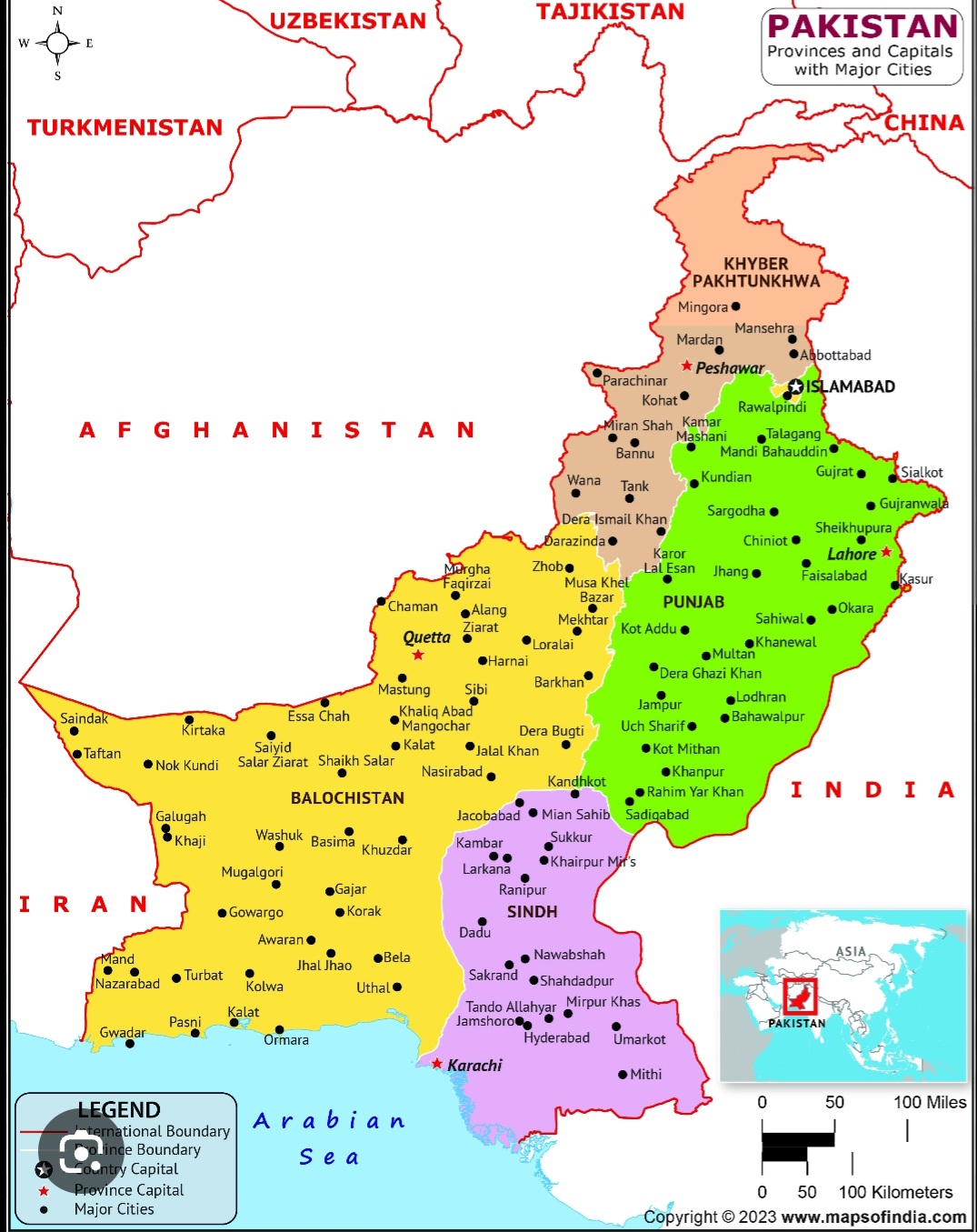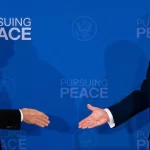
India’s Defence Industrial Mindset needs a Rethink - From Catching Up to Getting Ahead
November 25, 2025

Blog

Pakistan’s Illusion of Strategic Depth
Posted by admin
For Pakistan, the idea of strategic depth is a myth at best and a dangerous delusion at worst. Its geography, once thought to offer room to manoeuvre, has become a constraint in the age of precision warfare. Its western flank is hostile, its southern region is rebellious, and its eastern front faces a far more capable adversary.
The recent Indo-Pakistan skirmish marked by Operation Sindoor and its aftermath, offered a number of tactical and political insights. One of the most crucial lessons largely overlooked in the media frenzy and political posturing, is the enduring problem of Pakistan’s lack of strategic depth. To the trained, strategic eye, this is not a new discovery. But in the context of evolving technologies, shifting regional alliances, and persistent internal unrest, this limitation has become more acute, more visible, and far more dangerous for Pakistan’s long-term stability and defence planning.
Let us understand strategic depth. In military terms, strategic depth refers to the distance between the front lines or potential battlefields and a country’s vital assets, its industrial centres, population hubs, and key military installations. Strategic depth provides breathing room. It allows a country to absorb an initial blow, regroup, and mount a counter-offensive. Large nations like Russia, China, and even India enjoy this advantage. Pakistan does not.
At its broadest point, Pakistan is just about 450 km wide from its eastern border with India to its western frontier with Afghanistan and Iran. This narrowness becomes stark when compared to India’s strategic geography, where an adversary would have to fight through layers of geography and defences to reach the political and military heartland. Geographically thus, Pakistan is vulnerable. Its primary population centres and military infrastructure lie perilously close to its eastern border. Lahore, one of the country’s major cultural and economic hubs, is a mere 24 km from the Indian border. Other major cities like Sialkot, Faisalabad, and even Islamabad are within easy reach of Indian long-range missiles and airstrikes.
This vulnerability was vividly demonstrated during Operation Sindoor, when India launched precision strikes using long-range air-to-ground missiles such as the SCALP Storm Shadow and Hammer munitions. These were fired from Indian territory, without the need for aircraft to cross into Pakistani airspace. The Indian Air Force’s ability to strike deep into Pakistani Punjab and even Balochistan exposed the brittle nature of Pakistan’s geographical buffer.
The problem is further compounded by the fact that Pakistan’s conventional forces and key infrastructure are clustered in the eastern half of the country, close to the border with India, the very source of its strategic anxiety.
Western Buffer, a Myth. Historically, Pakistan’s concept of strategic depth was tied to its western neighbour Afghanistan. During the Cold War and especially throughout the 1980s and early 2000s, Pakistan’s military doctrine envisioned Afghanistan as a potential fall-back zone, a place where its military could regroup and re-engage in the event of an Indian offensive. This thinking also shaped Pakistan’s decades-long support for the Taliban, culminating in their rise to power again in August 2021.
But the tables have now turned, as they often do. What was once considered a strategic buffer has become a strategic liability. Afghanistan, true to its historical character, has always followed its own path and has consistently resisted control by any external power.
Ties between Islamabad and the Taliban regime have frayed dramatically. The Taliban has refused to rein in the Tehrik-e-Taliban Pakistan (TTP) which continues to mount attacks on Pakistani security forces from sanctuaries across the Durand Line. This collapse of Pakistan’s western strategy was made explicit when the Taliban denied Pakistani requests to hand over TTP leaders. The very geography Pakistan once counted on to buy time now serves as a base of hostility.
Balochistan, the Southern Challenge. The Baloch insurgency in Pakistan’s largest province adds another internal dimension to its lack of strategic depth. Baluchistan accounts for nearly 44% of Pakistan’s landmass, yet remains the least developed and most restive. Since 2002 the wave of the Baloch insurgency has intensified. Armed groups like the Baloch Liberation Army have carried out spectacular attacks on security forces, infrastructure, and even Chinese personnel working on the CPEC. The insurgency has transformed from a low-intensity rebellion into a highly coordinated movement. The attack on the Jaffer Express on 11 March 2025 signalled a dramatic escalation.
The implication for strategic depth is severe; Pakistan cannot rely on nearly half of its territory to station or manoeuvre critical assets without fearing sabotage, attack, or betrayal. This also undermines any notions of using Balochistan as a rear area in a future India-Pakistan conflict.
Nuclear Deterrence(without strategic shelter). Perhaps the most serious implication of Pakistan’s limited depth lies in the vulnerability of its nuclear assets. Since the 1998 nucrear tests, Pakistan has relied heavily on its nuclear deterrent as its guarantor of national security against India. Howevr nuclear deterrence is based upon survivability of both the delivery systems as well as the “Command and Control” infrastructure. It is precisely here that Pakistan’s geography coupled with its internal situation fail it.
Unlike countries with vast internal space to conceal, disperse, and relocate their nuclear weapons, Pakistan’s narrow geography compresses its strategic arsenal into a predictable corridor. Virtually all of Pakistan is within range of India’s missile forces including Agni-IV and Agni-V (and now precision cruise missiles like BrahMos) which can be launched from air, land, or sea. Even non-nuclear pre-emptive strikes, targeting Pakistan’s strategic command nodes, could impair its second-strike capability.
Pakistan’s strategic sites such as those in Sargodha, Chakwal, and near Kirana Hills have been geo-located through satellite imagery and open-source intelligence. This was underscored during Operation Sindoor, when one of the Indian strikes was reportedly close to the Nur Khan Airbase, located just 10 km from Kirana. The precision and proximity of Indian firepower to such a critical location must be a sobering reality for Pakistan.
Tactical warheads, tom- tommed by Pakistan require forward deployment, but in Pakistan’s case forward is essentially everywhere. There is no safe rear.
The lack of geographical buffer means that even a limited conventional conflict could place Pakistan’s nuclear posture under immense pressure. In any crisis, this heightens the risk of miscalculation, accidental escalation, or loss of command integrity. The real concern in Pakistan therefore ought to be – “Use it, or lose it” !! A dangerous proposition – isn’t it ? About time the world took notice.
Technological Death of Depth. Modern military technologies have all but erased traditional concepts of depth. Long-range missiles, stand-off weapons, stealth drones, and precision munitions allow adversaries to strike targets with pinpoint accuracy from hundreds of kilometres away. India’s growing inventory of BrahMos missiles, Hypersonic missiles, and deep-strike capable aircraft like the Rafale and Su 30 make virtually all of Pakistan’s territory vulnerable.
In the age of non-contact warfare, strategic depth is no longer measured in kilometres, but how well a nation can shield its critical infrastructure through dispersion, deception, mobility, and resilience. Pakistan seems to be lagging severely in this aspect.
Lesson from Op Sindoor. Operation Sindoor offered Pakistan a glimpse into the future of warfare. It must be a troubling one. The Indian Air Force demonstrated a combination of strategic patience, precision, and political signalling. It hit pre-designated targets deep inside Pakistani territory with impunity for the second time (after Balakot). It operated under the umbrella of robust air defence and electronic warfare cover. It used drone surveillance, decoys, and electronic jamming to confuse and fragment Pakistani response. Most significantly, India did not need to cross the border. It simply didn’t have to as Pakistan’s lack of depth meant its high-value assets were already within reach.
Conclusion
For a long time Pakistan’s security strategy has been driven by the idea of parity with India. But the imbalance in geography, economy, and technology has rendered that aspiration impractical. It must now shift to deterrence through stability, not provocation. The only viable path forward for Pakistan is not to seek more ground but to build resilience, if it can. Pakistan will do well to improve internal cohesion, reduce Punjabi dominance, and most importantly, reassess its strategic posture vis-a-vis India.
If Pakistan fails to recognise the shrinking envelope of its strategic space, the next conflict may not allow it the time or space to recover.
Col Ashwani Sharma (retd), Editor
12 Replies to “Pakistan’s Illusion of Strategic Depth”
Leave a Reply
Search Blog
Categories
Popular Posts







Excellent article Ashwani. Well written.
The analysis presented is exceptionally insightful, providing a thorough and nuanced exploration of Pakistan’s persistent yet flawed pursuit of strategic depth. The discussion effectively weaves historical context with contemporary geopolitical realities, capturing all essential subtleties and offering clarity on this complex strategic doctrine. The detailed examination of how Pakistan’s efforts in Afghanistan have repeatedly backfired, influencing both regional stability and its internal security, is particularly well-articulated.
Overall, the piece is timely, shedding valuable light on critical policy decisions and their enduring implications. Its lucid narrative and professional clarity not only enhance readability but also deepen the reader’s understanding of the intricate dynamics at play. Undoubtedly, it serves as a compelling reference for both strategic thinkers and policy influencers invested in South Asian geopolitics.
Well done, Ashwini. Looking for more such article from you.
Thank you, gentlemen. We’re trying to present unbiased analysis on. military matters, particularly in the region.
An outstanding perception, analysis and recommendations. Reflective of clarity of thought and foresight. Congratulations on a noteworthy piece. Regards
Nowhere to hide. Much like fish in an aquarium.
In addition to the measures suggested by you, I think Pakistan will have to get into military alliances with willing international powers for deterrence and survival. What is their ability to pay forthe same is another matter.
An insightful and well-researched analysis of Pakistan’s strategic doctrine!
The article effectively challenges long-standing assumptions about strategic depth, highlighting the evolving realities of modern warfare and regional geopolitics.
The depth of discussion on Afghanistan’s role and Pakistan’s shifting security concerns makes this a compelling read.
Kudos to DEFSTRAT for presenting such a thought-provoking perspective.
This is the first analytical article on Operation Sindhoor which has correctly highlighted the real value “Strategic Depth” both in terms of geographical as well as technological..
Extremely well written and to the point analysed.
Congratulations Col Ashwini Sharma.
Excellent analysis. Using the Tech Forward concept Pak’s strategic space has been contained. Essential that India embarks on gaining tech dominance in the sub continent using home grown technologies. .
Thank you for your encouraging comments
Very well articulated Ashwani!
In view of the setbacks received during Op Sindoor, Pakistan needs to re-assess its shortcomings including that of strategic depth and seriously review its doctrine going forward, otherwise it’s heading for disaster.
Mentally, Pakistan is catalepsy. Physically, it is in a strait-jacket of its own making. I am afraid, Pakistan will see just one way out, “Use it or lose it” thinking as you said. That is the big danger for India.
There is soft persistence in your writing, where ideas emerge gradually, forming cohesive rhythm and layered meaning. The text encourages patient observation, thoughtful reflection, and meditative literary experience.